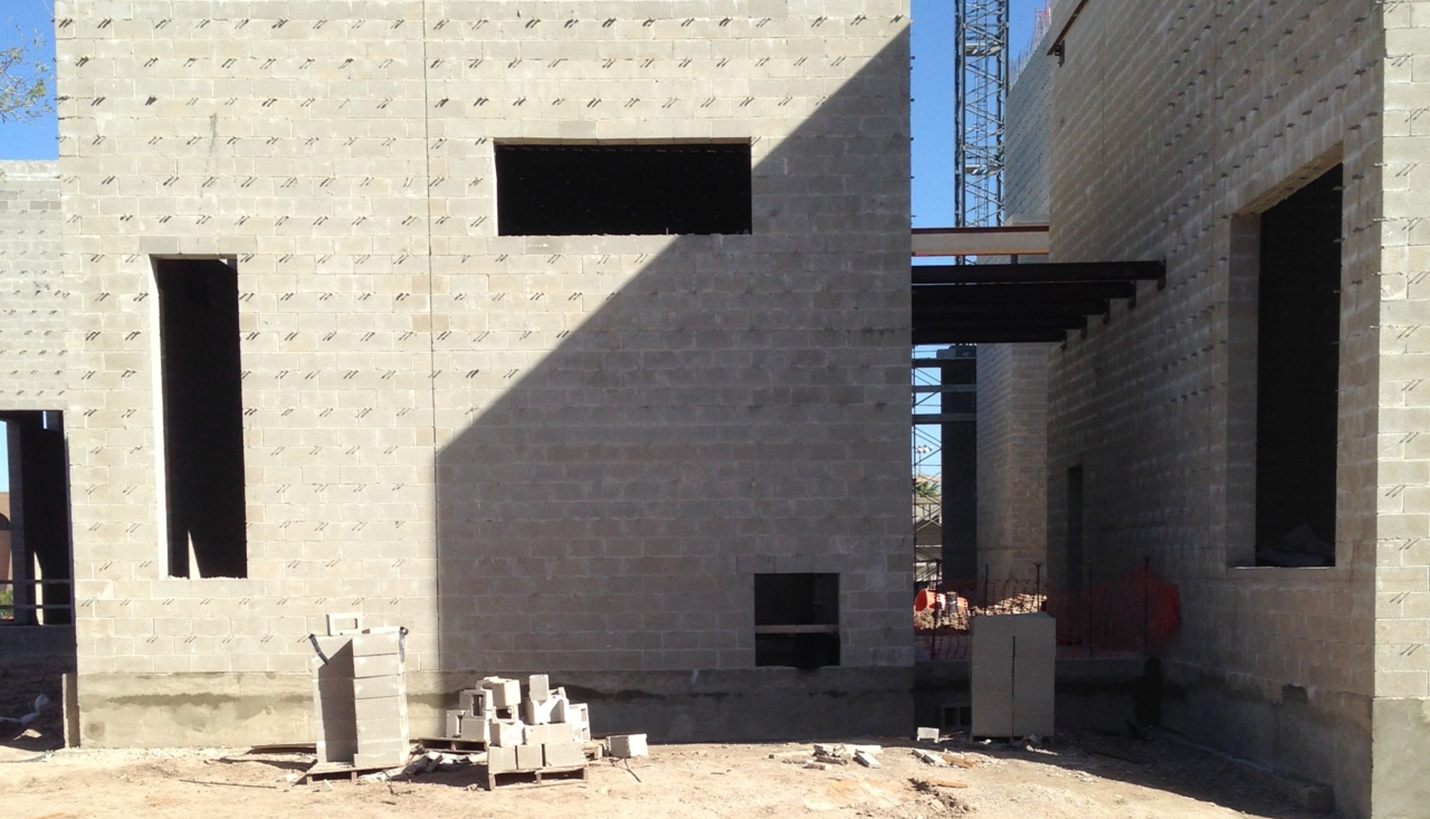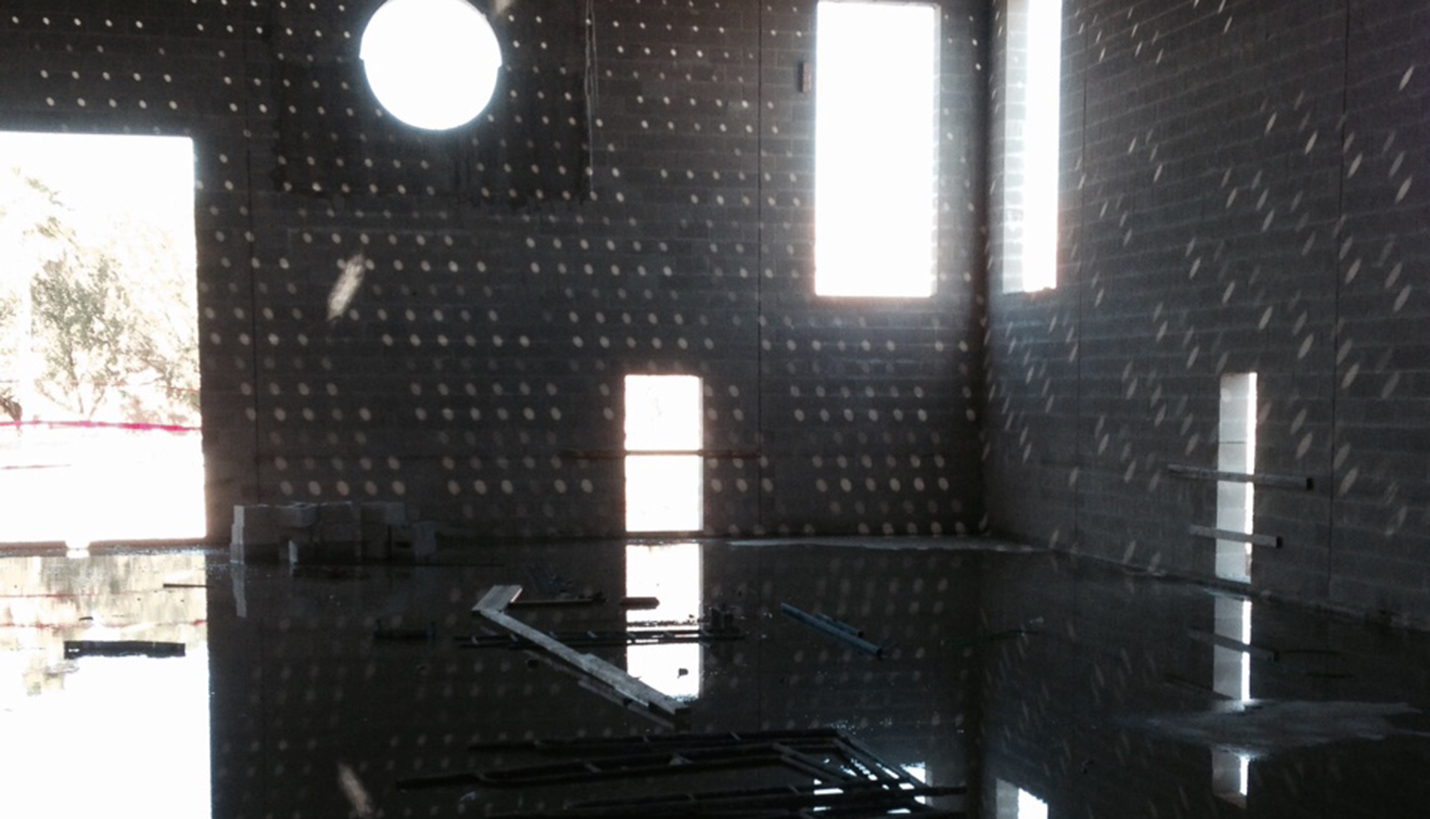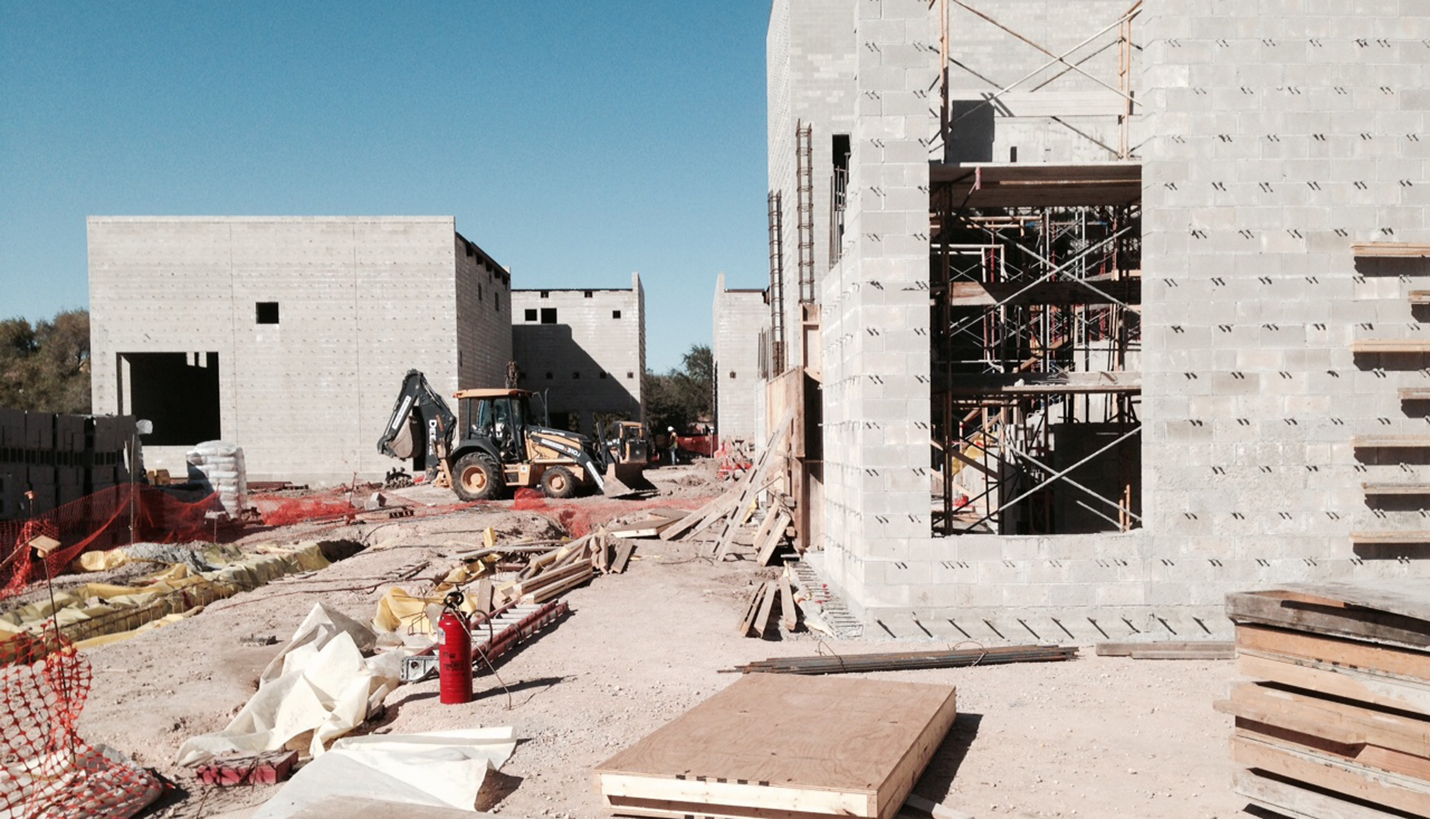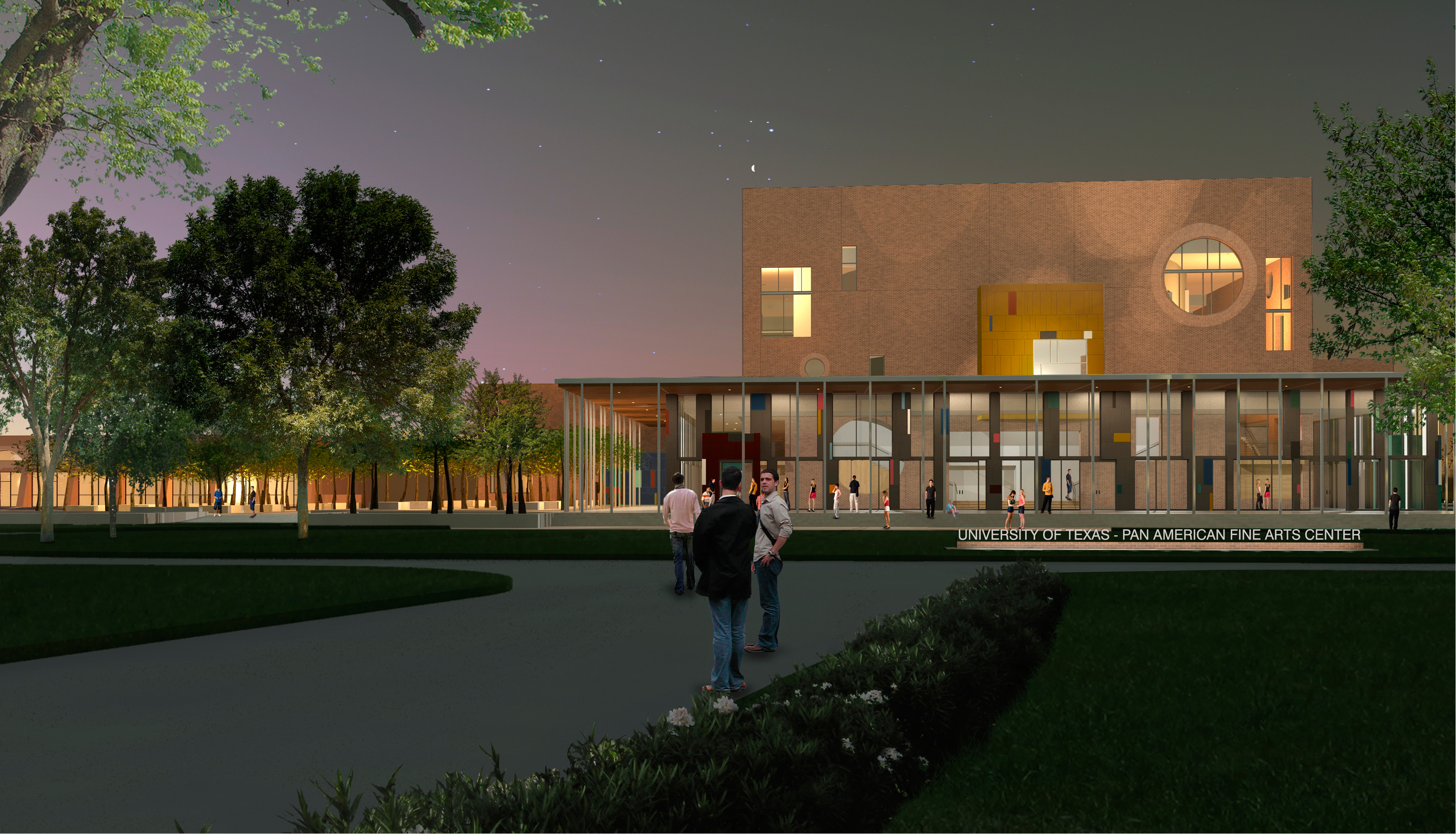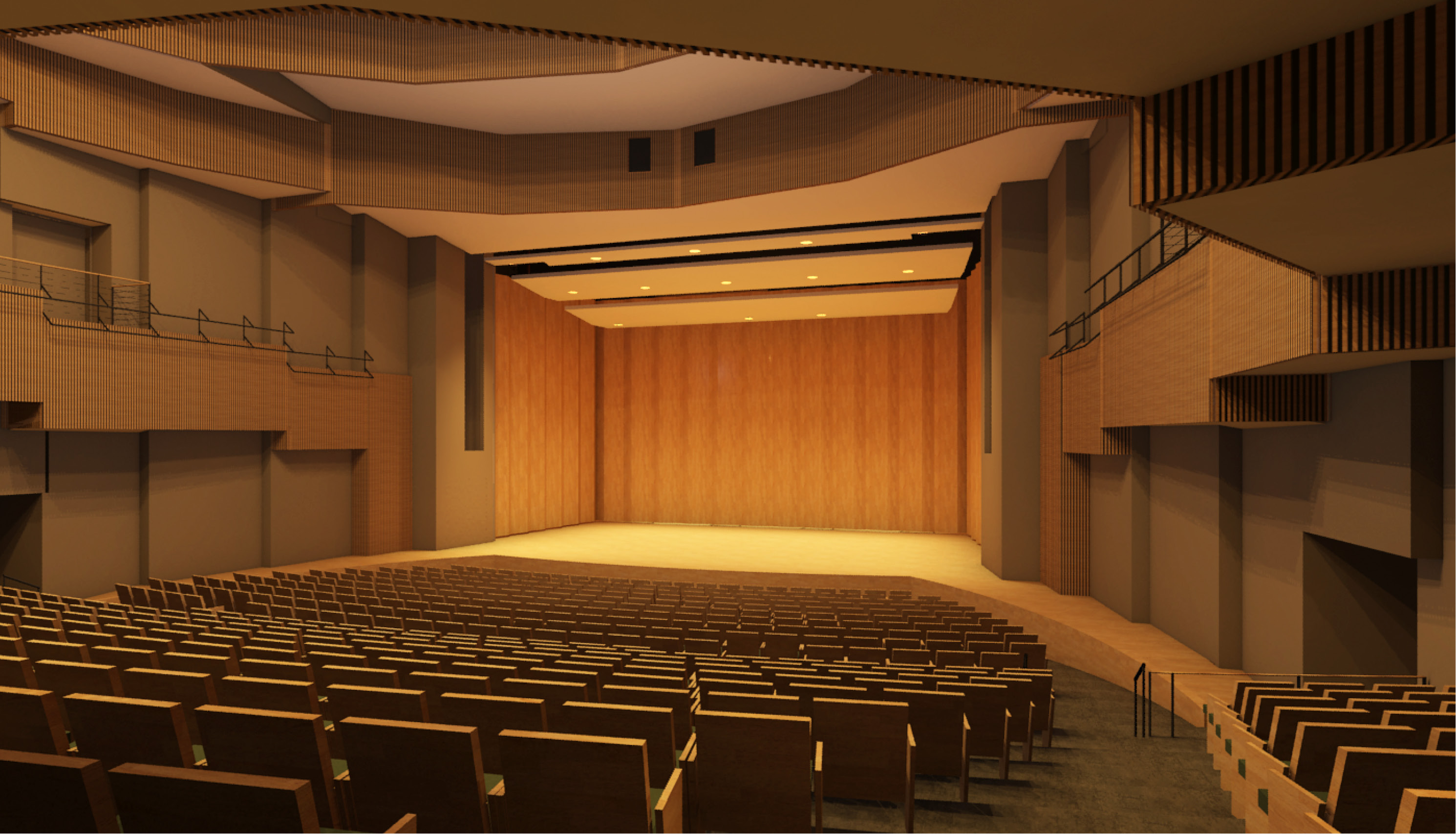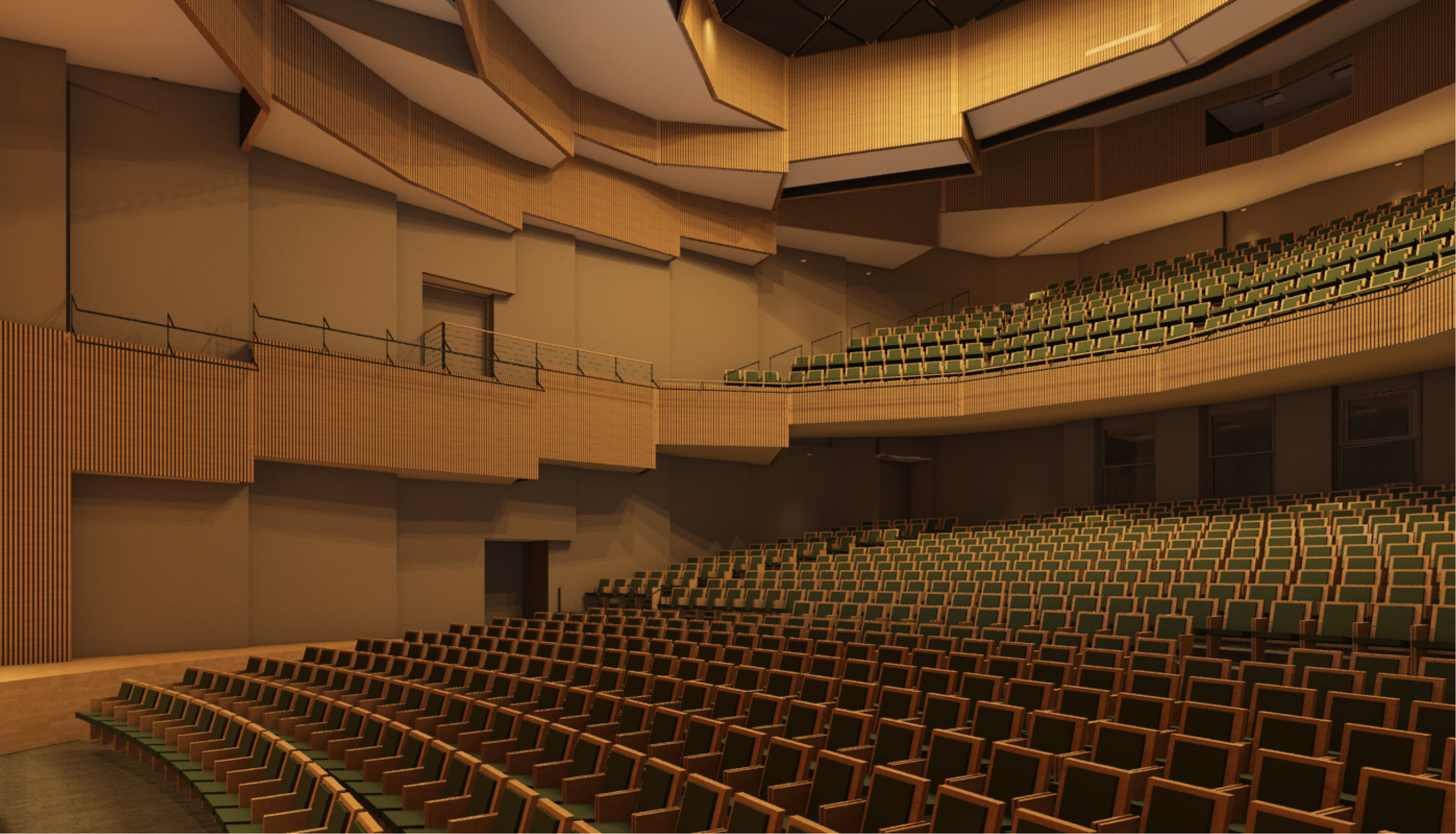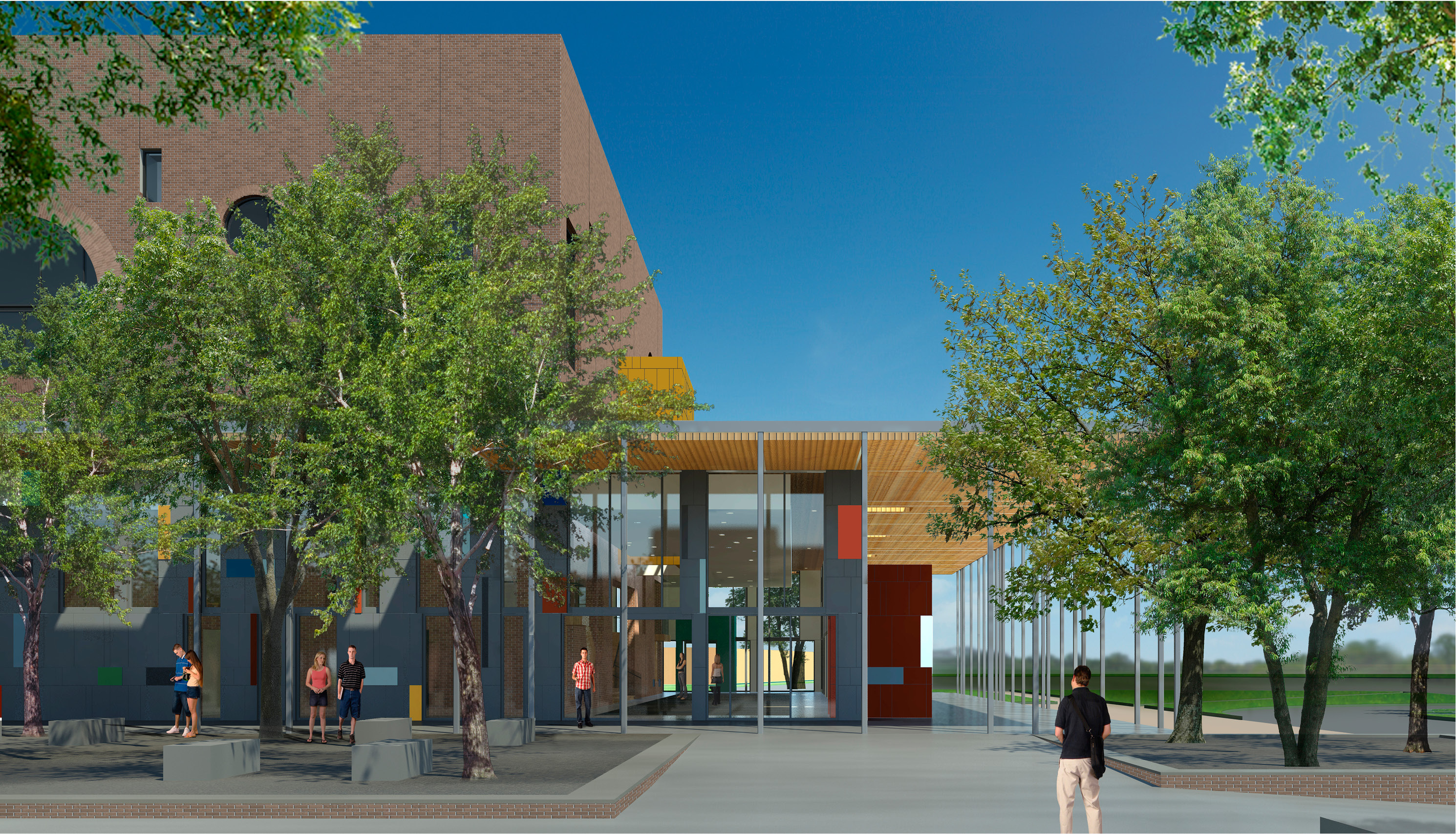Constructing the UT Pan American Performing Arts Complex
A couple of weeks ago, I visited the construction site for our new UT Pan American Performing Arts Center. We’re using load-bearing masonry walls, and at this stage, with the project half-complete, the building has the look of a modern-day Roman ruin. I love this stage of construction when the structure is coming out of the ground and turning into interesting forms and spaces. The whole building process is incredibly exciting and inspiring.
This will be a big building and a real landmark. It will serve as the campus gateway and will feature a 1,000-seat performance hall as its centerpiece. It is part of a complex for the arts on a campus originally designed by Kenneth Bentsen in the 1980s. His work was inspired by Louis Kahn’s buildings in Dacca, Bangladesh and Ahmedabad, India. Those Kahn buildings were masterpieces of masonry construction, and Bentsen did a good job of learning from them.
South Texas is a very hot, semi-tropical climate where the terrain is absolutely flat—not so different from Dacca and Ahmedabad. Masonry has long been a prominent building material in the region. As a kid, my grandparents lived in this area, and I have keen memories of the powerful brick buildings in a landscape full of citrus and palm trees.
From the start, we wondered if we could make a real masonry building here—not brick veneer on a steel or concrete frame, but thick, strong load bearing walls. In fact, real masonry walls turned out to be a very practical and economical structural system for this building in this region.
In the end, the walls will be a hybrid system—much like Kahn used and much like the Roman’s used in the precedents Kahn so admired. We will use both brick and concrete block, and the block will often be employed to create formwork for concrete lintels, piers and arches. This general construction technique is quite common in Mexico, just across the border, but is not so common elsewhere in the United States. It is fascinating to watch it go up.
There are large, circular and arched forms in the walls. These impart a great sense of strength and power that isn’t so palpable in the kind of frame construction we normally do. There is a definite toughness about it, and it reminds me of the experience of seeing Kahn’s work in South Asia years ago. There will be extensive glazed walls once the building is complete later this year that will provide a nice counterpart to the masonry in the finished building.
In addition to the main performance hall (which is clearly visible in its roofless form in the construction photos), there will be four rehearsal halls for choir, band, orchestra and mariachi. They form a village of rectangular rooms behind the concert space. When completed, the building will serve, not only as an important educational facility for the university, but also a cultural and performance center for the larger Rio Grande Valley.
Contributed By
Lawrence W. Speck
03/24/2014
People
- Cory Boden
- Daniel Brooks
- Joshua D. Coleman
- Casey E. England
- Mika England
- Shawn-Marie Henson
- Joel A. Holder
- Chad R. Johnson
- Matthew Z. Leach
- George E. Reeves, III
- Diane Rincon
- Jerald L. Segner
- Lawrence W. Speck
- Randy C. Twedt
Related Posts
- Architecture and Music
- Page Featured: Performing Arts Complex
- Dual Awards for Performing Arts Complex
- Performing Arts for All
- Architecture is Frozen Music at The University of Texas Rio Grande Valley Performing Arts Complex
- Page Wins 3rd HUB Award
- UTPA Celebrates Opening of New Performing Arts Complex




